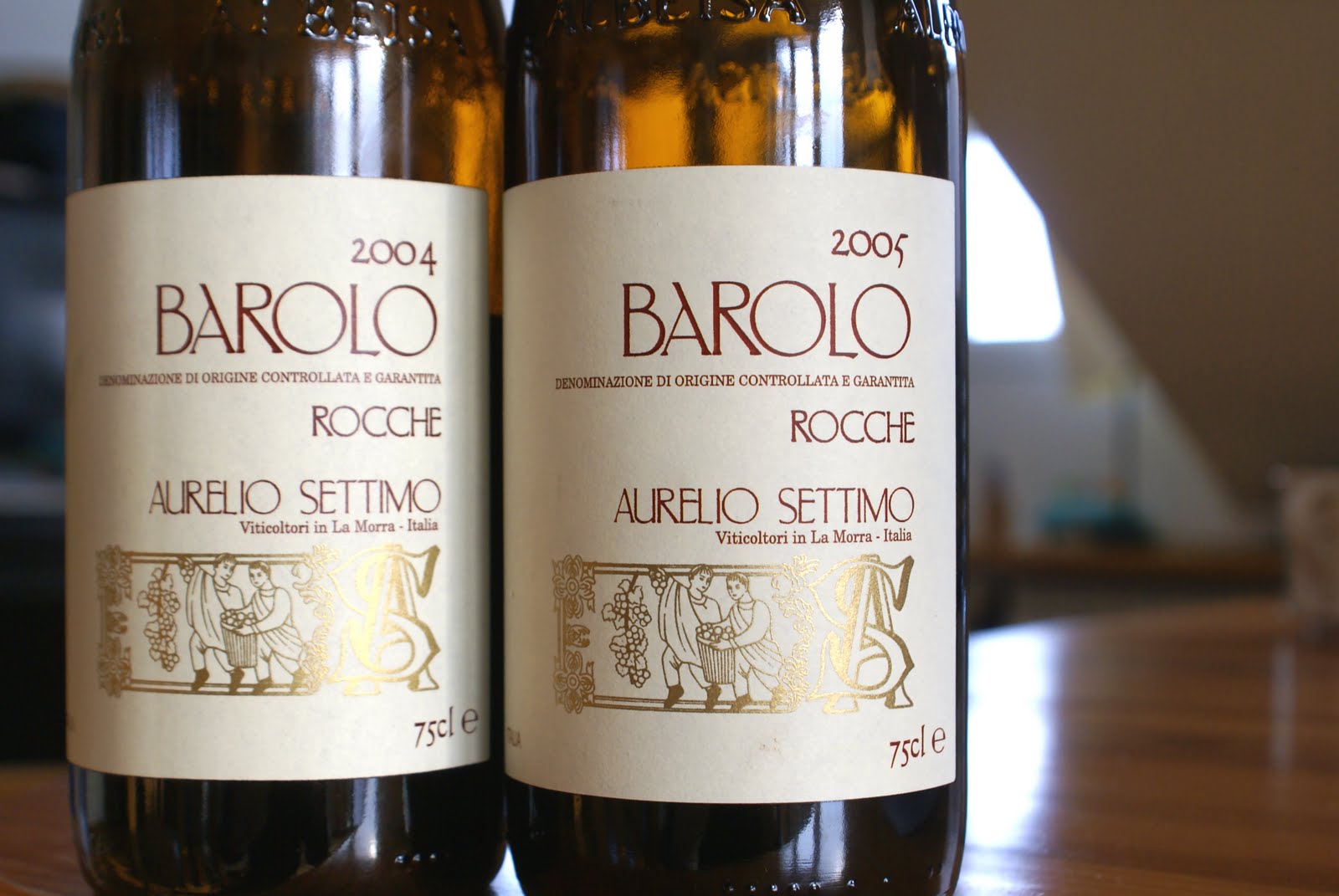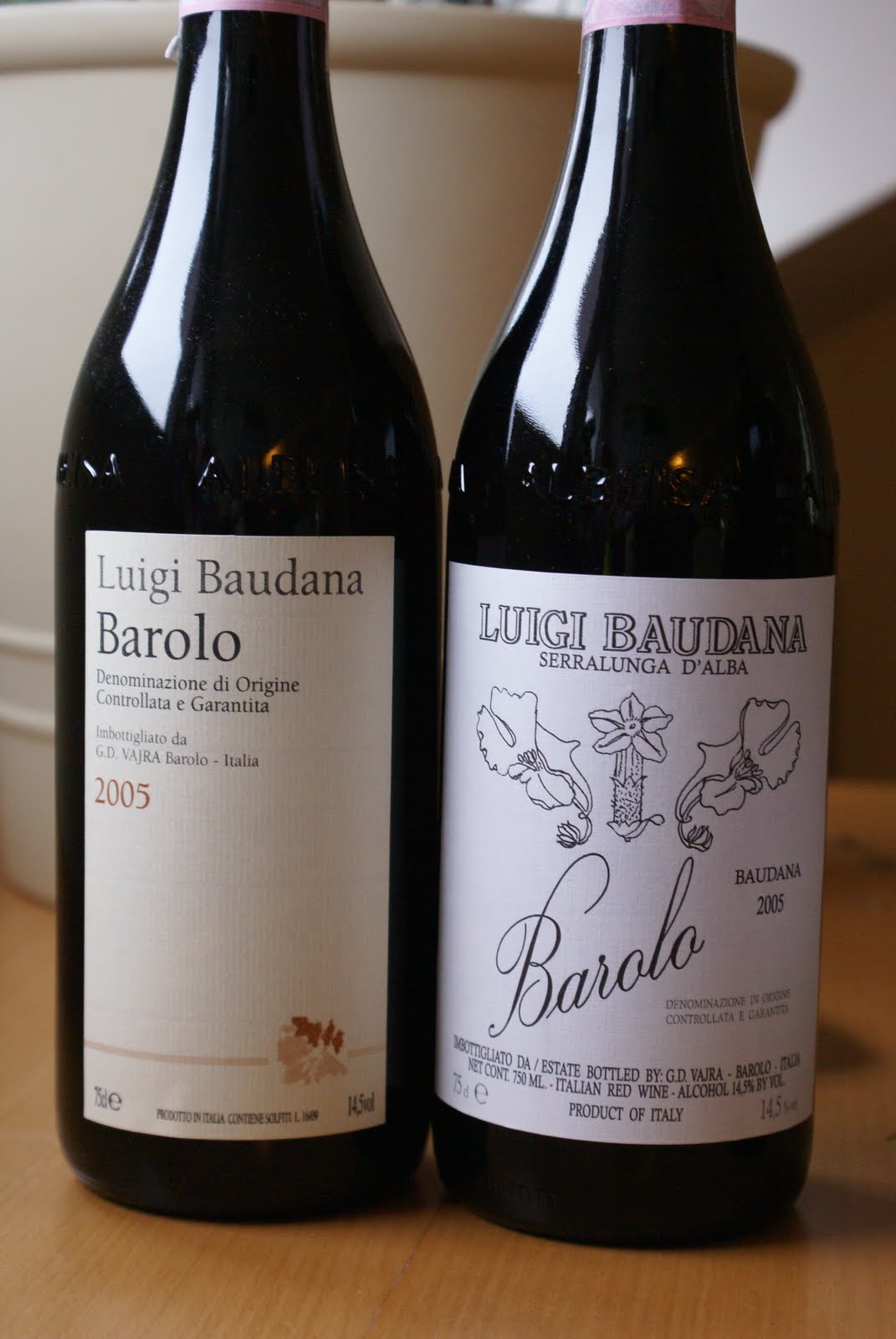Four delicious Barolos
Posted on 14 May 2010
I’m off to Barolo on Sunday for an exciting tasting of the newly released 2006s. As I mentally prepare for the high acids and assertive tannins of this classic Italian wine, I opened a few bottles from the wine rack. Proudly traditional Barolos exactly as I like them.

The estate of Aurelio Settimo, now run by Aurelio’s daughter Tiziana, has vineyards in the village of La Morra, and more precisely in the lower-lying neighbourhood of Annunziata. This is the warmest part of the Barolo district and usually delivers wines of high ripeness and power. But the grand cru of Rocche, due to its special soil, yields a more structured tannic Barolo that usually needs of considerable bottle age to soften. I tasted the 2004 and 2005 Rocche. The former is considered a better vintage. Made in an orthodox traditional style with very long ageing in large oak barrels (botti), the nose here is a little reticent (raspberry, cranberry, minor cherry) but the palate, with its powerful architecture and unadulterated Nebbiolo tannins, is very satisfying; 2004 is a tight vintage for the long haul and it really shows here. While the tannins are fierce here, all the elements necessary for a positive evolution are present: balanced acidity, elegant fruit, minerality and very good length, although it seems a bit low on fruit at the moment.
The Barolo Rocche 2005 is just a little fuller in colour but also with a hint of orange, a real Nebbiolo. The nose is a cooler climate thing than the 2004: plumpier, fruitier, more cherry than cranberry, less rigid and austere at this stage. It’s really quite attractive, and the palate is also more approachable with more presence of fruit at mid-palate, and less aggressive tannins. I have a soft spot for the mouth-puckering no-prisoners-taken style of the 2004 but for overall balance and harmony the 2005 is more attractive today, no doubt. It’s really quite a difference between the two, in fact.
The Settimo style is a bit of an endangered species in Barolo these days, as more and more estates move to a fruitier, less austere expression of Barolo. To me, there’s something beguilingly noble and alluring in the bittersweet, tannic juiciness of these wines. Long may they continue.

The other trio of samples came from Luigi Baudana, a rather obscure traditional estate that as of 2008 has been taken over by Aldo and Milena Vaira of the superstar G. D. Vajra estate; it’s their eldest son Giuseppe that will be overseeing the production here (the labels and ranges will be kept separate). I tasted the rather neutral and forgettable Langhe Chardonnay 2008 that was rather neutral, and two very good Barolos. The simple blended Barolo 2005 is what I would like to drink more often: a simple (but authentic), medium-bodied, everyday drinking Barolo. Low-key on the nose with moderately intense fruit, herby and spicy, it shows a palate that’s very classic in style, clean with good length, balanced tannins, ripe acidity, if again a little unfruity and unintense. Where it lacks in intensity and boldness it scores very high is purity and authenticity: for a duck breast risotto last Sunday I really needed nothing flashier.
The Barolo Baudana 2005 (grapes from the Baudana and Cerretta, on the structured white soils of Serralunga d’Alba) is a more serious affair. Less vegetal, more floral than the 05 Barolo above, it shows an outstanding evolution in the glass. Concentrated and textured, this shows ripe tannins and unaggressive acids, but also more minerality and tannic structure with time in glass. The 2005 Barolos are typically soft approachable wines that will not age endlessly but this one, with its tight minerality, should two or three years. It really bodes extremely well for the Baudana estate under its new management.



